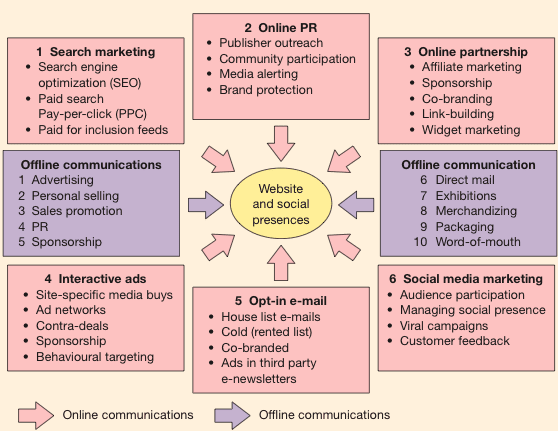Background
Starting “between the walls of a New England dorm room” (RFCR, 2017), Run For Cover Records is eclectic alternative rock and punk record label. They compete in the ever-changing music industry and inhabit a fairly niché corner of marketing and releasing music. Current artists on their roster include the likes of Turnover, Basement and Modern Baseball (pictures from left to right); all of which are popular in their specific ‘scenes’.


Record labels remain to be a favoured guise for artists releasing music and “marketing is one of a record label’s most important functions” (Mcdonald, 2017). Marketing and now digital marketing plays an essential role in the music industry; a musicians release is often surrounded by online content that promotes artist’s individual brand.
Value Offering?
Under some analysis of Run For Cover Records social media accounts and websites, there was no indication of them using a value offering to entice potential customers. Simply stating on their Facebook bio “Record Label in Boston, Massachusetts”. On first thought, this could encapsulate the punk nature of their target market, the anti-establishment tendencies of their audience may not react well to basic ‘catchy’ straplines and value offerings. The roster is generally what attracts potential customers to their online pages as it is often the artist’s merchandise, music and concert tickets that are being sold. Current Roster is shown below:
The Competition?
Record labels broadly tend to be genre specific, meaning that all the artists signed to them will loosely produce a similar style of music. As a result, a partially fragmented market is produced. This is not an all-encompassing model that every label follows, but is certainly the most popular. Topshelf Records, No Sleep Recording, and No Idea Records appear to be in direct competition with Run For Cover Records. These labels operate in a similar genre to RFCR and have represented a proportion of their previous artists.
New market entrants into this sector of the industry are often DIY small businesses. Their scope and influence are normally far smaller than the likes of Run For Cover Records. An example of which Honeypot Records work with smaller artists promoting and releasing punk records in a plethora of formats.
Digital Marketing Strategies?
Daily (2004) states that the “conscious designing of a website to create a positive effect” can be implemented as a marketing strategy. From a pronominal analysis of Run For Cover Records website, Facebook page, and Twitter the branding follows a distinct red, white and black colour scheme. The website in this context could be simply described as a brand-building tool, but it is far more usable and clear than expected, landing on an effective revolving photo reel showing artists they represent. Fans have the ability to delve deeper into their favorite artists through the content provided, thus the marketing material includes interviews, merchandise shots, artist biographies, descriptive reviews of releases and artist photo/video shoots. Similar layouts and strategies can be seen in the direct competition mentioned previously, but they differentiate themselves through the logo, font, and colour-way.
Social Media Marketing Strategies?
Currently, in the music industry, social media is arguably one of the most powerful tools for identifying and reaching a target market. Focusing on Facebook, with over 72,000 likes, Run For Cover Records attract a substantial amount of online attention. A rational use of pinned posts and always adding a picture/video element to every post engages the reader. Also incorporating their logo to some of the content produces a strong brand image, this can be seen below:
Differing from the website format, social media encourages direct communication between company and consumer, through the commenting aspect. The nature of the material being produced makes a constructing an audit far more difficult, this is because an artists own popularity will have a direct link to the number of comments and likes a post receives. Run For Cover Records are also avid ‘sharers’ of other companies content relating to them or their artists. For a creative based industry, gaining and retaining fans can come with working in collaboration with other media forms. One such example can be seen in Run For Cover Records stream of a band Citizen through the Audiotree live sessions.
Finally, creating promotional offers on merchandise and marketing records in an aesthetically pleasing format likely increases revenue. This marketing strategy is imperative for success in an industry that revenue was cut by up to 40% through the use of music streaming services legal and illegal (Ellis-Peterson, 2017). Run For Cover Records will undoubtedly have a prosperous future as they continue to sign an array of exceptionally talented artists. Thier digital marketing presence is to be applauded for its creativity, the branding throughout is coherent and individualistic.
tl189 – The University of Brighton
References
Dailey, L., 2004. Navigational web atmospherics: Explaining the influence of restrictive navigation cues. Journal of Business Research. 57, 7, 795-803
Ellis-Petersen, H. (2017). How streaming saved the music: global industry revenues hit £12bn. [online] the Guardian. Available at: https://www.theguardian.com/business/2017/apr/25/2016-marks-tipping-point-for-music-industry-with-revenues-of-15bn [Accessed 13 Dec. 2017].
Mcdonald, Heather (2017). Why Record Labels Have Such Tremendous Influence on the Music Industry. [online] Available at: https://www.thebalance.com/what-is-a-record-label-2460614 [Accessed 15 Dec. 2017]






